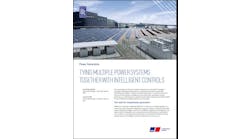Scott Manson, technology director at Schweitzer Engineering Laboratories (SEL), sat down with Microgrid Knowledge’s Elisa Wood at Microgrid California to discuss why microgrids are so popular in the state and some practical ways we can prevent microgrids from suffering the same fate as the state’s bulk electric power system.
The fragility of California’s bulk electric system, a lack of infrastructure development and a push toward renewable energy are all driving microgrid adoption in California, according to Scott Manson, technology director at SEL. “Today, California is heavily invested into renewables and more so than most other locations,” Manson said in a recent interview with Microgrid Knowledge. “So, in many ways, they’re leading the charge to renewables. They’re also seeing the side effects first of these renewables, and hence why so many in California are investigating microgrids.”
One thing Manson noted is that a distributed energy resources microgrid that includes generators, batteries and renewables will face similar challenges to the current system because “these are the same electronics that are reducing the reliability of our bulk electric power system.” To ensure that microgrids don’t meet the same fate as the bulk electric system, Manson’s teams at SEL have been researching microgrids designed with a focus on reliability. “What we’ve found is that the solutions are being derived from a close cooperation of domestic manufacturers and suppliers.” It recently published its findings in a new paper.
Manson shared some practical advice for how developers can make microgrids more reliable than the bulk power system. First, selecting the correct battery inverter is key — and it may require them to spend a little more money. He also said the power system needs “a lot more programmable, intelligent and multifunction devices.” He added that “any location where you may have gotten by in the past with fuses or simple electromechanical devices or solid state overloads, they’re no longer viable.”
Look for more interviews with microgrid experts in the Microgrid Knowledge Video Library.







